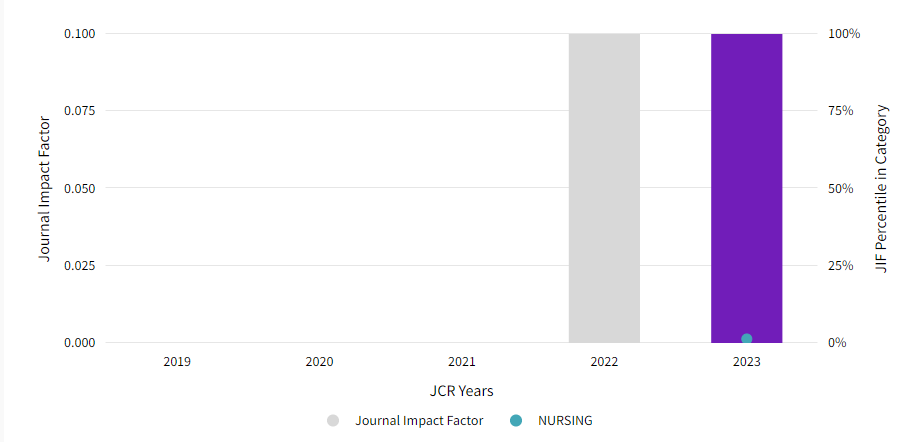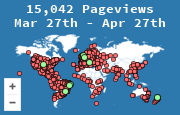Formulário de Avaliação de Artigos
Article Review Form
Is the manuscript aligned with the scope and objectives of the journal?
1. Appropriateness to the Journal's Scope
- Objective: Evaluate if the manuscript is aligned with the scope and objectives of the journal.
- Guidance: Check if the manuscript's topic is relevant to the field of health care and if it contributes to the advancement of knowledge in this area. Consider whether the study addresses topics of interest to the journal's readers.
- Criteria:
- Yes: The manuscript is clearly within the scope of the journal.
- Partially: The manuscript is partially aligned but may need adjustments.
- No: The manuscript does not align with the journal's scope.
- Comments: Provide suggestions at the end of the evaluation on how the manuscript can be better aligned with the journal's scope if necessary.
Regarding originality in the field of health, do you consider the article
2. Originality and Relevance
- Objective: Evaluate the innovation and importance of the work.
- Guidance: Consider if the manuscript presents new ideas, methods, or significant results for the field of health care. Originality and relevance should be highlighted.
- Criteria:
- Excellent: Highly original and relevant.
- Good: Original and relevant.
- Satisfactory: Acceptable, but with little innovation.
- Unsatisfactory: Lack of originality and relevance.
- Comments: If you wish, explain how the work contributes to the field or suggest improvements.
Regarding clarity and quality of writing, do you consider the article
3. Clarity and Quality of Writing
- Objective: Evaluate the clarity, structure, and quality of writing.
- Guidance: Check if the manuscript is well-written, with clear and organized ideas. The language should be precise and accessible.
- Criteria:
- Excellent: Very clear and well-structured.
- Good: Clear and well-structured.
- Satisfactory: Understandable, but can improve.
- Unsatisfactory: Confusing and poorly written.
- Comments: If you wish, provide suggestions to improve the clarity and quality of writing.
Regarding relevance, does it present new ideas or relevant results for the health field? Do you consider the article
Objective: Evaluate the importance and potential impact of the manuscript in the field of health care, considering its contribution to the advancement of knowledge and practice in the area.
Guidance: Consider if the manuscript addresses significant issues, presents new ideas or results that could influence clinical practice, research, or health policy. Relevance should be assessed in terms of the potential impact on the scientific community and professional practice in the field of health care.
Evaluation Criteria:-
High Relevance:
- Description: The manuscript addresses a critical or innovative issue in the field of health care, with the potential to make a significant impact. The results are highly applicable and have the potential to influence policies, practices, or future research.
- Criteria: Choose this option if the manuscript presents new and important ideas, addresses significant gaps in the literature, or has evident practical applications.
- Comments: Explain how and why the manuscript is highly relevant, highlighting its significant contributions.
-
Medium Relevance:
- Description: The manuscript is relevant and contributes to the field of health care, although it may not be innovative or highly impactful. The results are useful and contribute to existing knowledge, but the impact may be more limited.
- Criteria: Choose this option if the manuscript presents a good level of relevance but with less potential for significant transformation in the area.
- Comments: Highlight the strengths and any limitations in terms of relevance, suggesting how the impact of the work could be increased.
-
Low Relevance:
- Description: The manuscript has limited relevance to the field of health care. It may address well-established issues or present results that do not substantially add to existing knowledge or practice.
- Criteria: Choose this option if the manuscript does not address important issues or if the application of the results is limited.
- Comments: Explain why the manuscript has low relevance and provide suggestions on how it could be improved to increase its importance.
-
No Relevance:
- Description: The manuscript has no apparent relevance to the field of health care. It may be outside the scope of the journal or address issues without significant impact on practice or research.
- Criteria: Choose this option if the manuscript does not present relevant contributions to the area.
- Comments: Detail the reasons why the manuscript is not relevant and provide constructive feedback for the authors.
Additional Instructions:
- Be clear and objective in your relevance assessment.
- Use specific examples from the manuscript to justify your assessment.
- Maintain a constructive and respectful tone in all your comments.
This guidance will help ensure that your relevance assessments are accurate and useful, providing valuable feedback to editors and authors on the potential impact of the manuscript.
Regarding the adequacy of the methodology, how do you consider it
4. Methodology
- Objective: Evaluate the adequacy and description of the methodology.
- Guidance: Consider if the methodology is appropriate for the research and if it is well described. The methodology should be robust and replicable.
- Criteria:
- Excellent: Rigorous and well-described methodology.
- Good: Adequate and well-described methodology.
- Satisfactory: Basic but sufficient methodology.
- Unsatisfactory: Inadequate or poorly described methodology.
- Comments: If you wish, suggest improvements in the description and adequacy of the methodology.
Regarding the clarity of the results presentation, how do you consider it
Data Analysis and Results
- Objective: Evaluate the adequacy and clarity of data analysis and results presentation.
- Guidance: Check if the analytical methods are appropriate and if the results are presented clearly and logically. The results should be well interpreted and discussed.
- Criteria:
- Excellent: Robust analysis and clear results.
- Good: Adequate analysis and clear results.
- Satisfactory: Basic but sufficient analysis.
- Unsatisfactory: Inadequate analysis and confusing results.
- Comments: If you wish, highlight strengths and suggest improvements in the analysis and presentation of results.
Regarding data analysis, do you consider
Data Analysis and Results
- Objective: Evaluate the adequacy and clarity of data analysis and results presentation.
- Guidance: Check if the analytical methods are appropriate and if the results are presented clearly and logically. The results should be well interpreted and discussed.
- Criteria:
- Excellent: Robust analysis and clear results.
- Good: Adequate analysis and clear results.
- Satisfactory: Basic but sufficient analysis.
- Unsatisfactory: Inadequate analysis and confusing results.
- Comments: If you wish, highlight strengths and suggest improvements in the analysis and presentation of results.
Regarding the well-founded discussion and coherent with the presented results, how do you consider this article
Discussion
- Objective: Evaluate the foundation of the discussion and the coherence of the conclusions.
- Guidance: Check if the discussion is well-founded and if the conclusions are coherent with the results. The discussion should contextualize the findings within the existing literature.
- Criteria:
- Excellent: Well-founded discussion and coherent conclusions.
- Good: Adequate discussion and coherent conclusions.
- Satisfactory: Basic but coherent discussion.
- Unsatisfactory: Weak discussion and incoherent conclusions.
- Comments: If you wish, suggest improvements in the foundation and contextualization of the discussion.
Regarding the adequacy and updating, the references are
Bibliographic References
- Objective: Evaluate the adequacy and updating of the references.
- Guidance: Check if the references are relevant, adequate, and updated. The citation should follow the journal's standards.
- Criteria:
- Excellent: Relevant and updated references.
- Good: Adequate and updated references.
- Satisfactory: Basic but sufficient references.
- Unsatisfactory: Inadequate or outdated references.
- Comments: If you wish, suggest improvements in the selection and formatting of the references.
What is the potential contribution of this manuscript to the health field
Contribution to the Field
- Objective: Evaluate the potential contribution of the manuscript to the field of health care.
- Guidance: Consider the relevance of the results and the practical application of the findings.
- Criteria:
- High: Significant and relevant contribution.
- Medium: Adequate contribution.
- Low: Limited contribution.
Regarding publication, what is your recommendation
Objective: Provide a conclusive assessment on the suitability of the manuscript for publication in the Revista de Pesquisa Cuidado é Fundamental Online, based on all previously evaluated criteria.
Guidance: Consider all aspects of the manuscript, including originality, relevance, clarity, methodology, data analysis, discussion, and adequacy of references. Based on this comprehensive evaluation, provide a recommendation that best reflects the quality and contribution of the manuscript to the field of health care.Recommendation Options:
-
Accept as is:
- Description: The manuscript meets all evaluation criteria with excellence. No significant revisions are needed.
- Criteria: Choose this option if the manuscript is clear, well-structured, methodologically solid, and offers a significant and well-founded contribution to the field of health care.
- Comments: Briefly explain the strengths that justify this recommendation.
-
Accept with minor revisions:
- Description: The manuscript is of high quality but requires some minor corrections to improve clarity, fix small errors, or adjust minor methodological aspects.
- Criteria: Choose this option if the necessary revisions are minor and do not significantly alter the structure or results of the manuscript.
- Comments: List the recommended minor revisions and explain how they can improve the manuscript.
-
Substantial revision needed:
- Description: The manuscript has potential but requires significant revisions in several areas, such as methodology, data analysis, clarity of writing, or overall structure.
- Criteria: Choose this option if the manuscript needs substantial improvements but still has a solid foundation and relevance to be considered for publication after revisions.
- Comments: Provide a detailed list of necessary revisions, including specific suggestions to improve the manuscript.
-
Reject:
- Description: The manuscript does not meet the necessary quality criteria for publication, even with revisions. It may be unsuitable for the journal's scope, methodologically weak, or lack significant contribution to the field.
- Criteria: Choose this option if the manuscript presents fundamental issues that cannot be resolved with revisions or if it is not suitable for the journal.
- Comments: Clearly explain the reasons for rejection, highlighting the main problems that led to this decision. Provide constructive feedback that can help the author in future submissions.
Additional Instructions:
- Be clear and objective in your comments.
- Provide specific examples to justify your recommendation.
- Maintain a constructive and respectful tone in all your observations.
This guidance will help ensure that your recommendations are well-founded and useful for both editors and authors.
If your recommendation was to accept as is or accept with minor revisions, what is the priority for this publication
From zero to 10, what score would you give to this study, considering that:






















